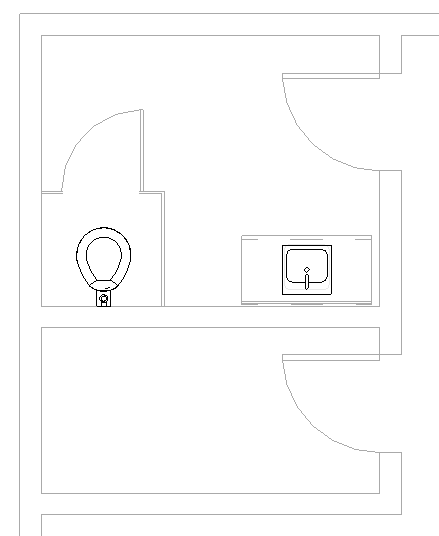Plumbing systems are logical entities that facilitate calculations for flow and sizing of equipment.
They are independent of the piping that is placed in a project to show the routing and connections between plumbing fixtures. Once you have fixtures placed in a project, you can create domestic hot water, domestic cold water, and sanitary systems to connect the components of the plumbing system.
- When fixtures are initially placed in a project, they are not assigned to a system. When you add piping to connect the components, they are automatically assigned to a system.
- You can select the components and manually adding them to a system. After the components are assigned to a system, you can use the Generate Layout Workflow tool to define the routing for pipes, and automatically create the piping for the system.
Use the About the System Browser to verify that all of the components are assigned to the correct piping system.
By default, there are 3 system types for plumbing: domestic hot water, domestic cold water, and sanitary. You can create custom system types to handle other types of components and systems. For example, you can create a high pressure supply air system. You can also modify the type parameters for a system type, including graphical overrides, materials, calculations, abbreviation, and rise/drop symbols.
Discipline-specific views are essential when designing a plumbing system in a project. They make it possible to place and view the components in the systems. Because the components are placed at specific heights in the spaces in your project, the views that you create should specify an appropriate view range and discipline.
Revit provides several view templates that automatically specify many of the view properties needed to define discipline-specific views. See Applying a View Template.
The examples in the topics that follow demonstrate the steps used to create a domestic hot water system, domestic cold water system, and a sanitary system for a sink and a toilet. The toilet, casework, and sink have already been placed in the plan.
